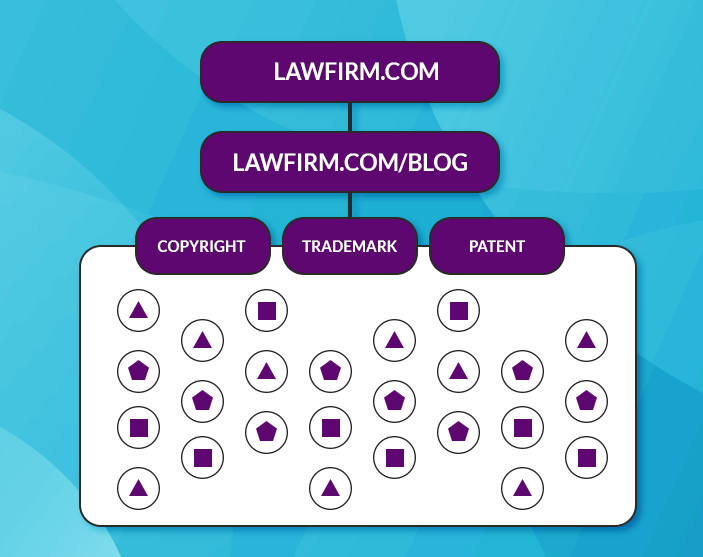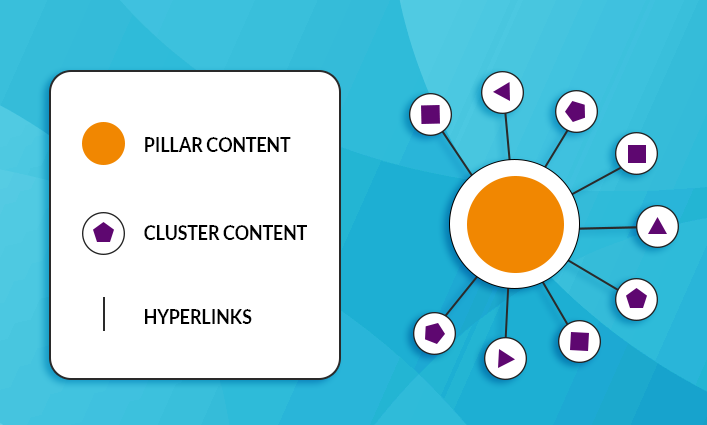
What Is a Pillar Page? And Why It Matters For Your Law Firm’s SEO Strategy
As the legal industry becomes increasingly competitive, law firms need to develop effective SEO strategies to enhance their
What is a Pillar Page?
A pillar page is a comprehensive and long-form piece of content that covers a broad topic in detail. It serves as the central hub for all related subtopics and provides valuable information to visitors to your website. By creating a pillar page, law firms can establish their expertise in a particular niche, attract more traffic from search engines, and improve their website’s overall SEO. The page should be well-structured with easy navigation to subtopics and include internal links to relevant pages on the website. To create an effective pillar page, it’s essential to research your audience’s needs and interests and provide up-to-date information that adds value. Regular updates to the page will keep it fresh and engaging for visitors, encouraging them to return for more information. By incorporating multimedia content such as videos, podcasts, and images, you can further enhance the visitor experience on your page and increase the likelihood of repeat visits.
Why Pillar Pages Matter For Law Firm SEO Strategy
Pillar pages are critical for a law firm’s SEO strategy for several reasons. First, they enable law firms to organize their content in a way that enhances their website’s overall architecture. By creating a central hub that links to related subtopics, law firms can improve their website’s navigation and usability, making it easier for visitors to find the information they need. They can also improve their website’s overall structure and indexing by interlinking pages and creating a clear hierarchy of content.
Pillar pages also help law firms establish authority and expertise in a particular area of practice or industry. By providing comprehensive and up-to-date information on a specific topic, law firms can demonstrate their knowledge and experience to potential clients. They can also attract more traffic from search engines, as pillar pages often rank higher on search engine results pages (SERPs) than short-form content pieces.
Finally, pillar pages allow law firms to target long-tail keywords that may not be feasible in shorter pieces of content. By covering a broad topic in detail, law firms can include a variety of related long-tail keywords that align with their target audience’s search queries. This can help them rank higher on search engines for these keywords, ultimately improving their online visibility and attracting more potential clients.
What Are Topic Clusters and Cluster Content?
Topic clusters and cluster content are related to the concept of pillar pages. A topic cluster is a group of related subtopics that are linked to a central pillar page. Cluster content, on the other hand, refers to individual content pieces that cover each subtopic in more detail. The purpose of creating topic clusters and cluster content is to provide a more comprehensive and organized approach to content creation and website architecture.
By creating topic clusters, law firms can organize their content in a way that improves their website’s structure and usability. Each cluster content piece provides more in-depth information on a particular subtopic, and the internal links between the cluster content pieces and the pillar page help visitors easily navigate through the available content. This approach also signals to search engines that your website has a clear and organized structure, which can improve your visibility on SERPs.
For example, a law firm that lists intellectual property as one of its areas of practice may decide to create an intellectual property law topic cluster. The firm would then create a pillar page on intellectual property law followed by subtopic pages on copyright law, patent law, and trademark law. The firm would then link all of the subtopic pages to the pillar page and from the pillar page to the subtopic pages.
Once this structure is complete, the firm would then create cluster content that would support each subtopic page. This content might include articles or blog posts on public performing rights, public performance licenses, reproduction rights, mechanical licenses, and synchronization licenses. Once these articles are created and published, you would link them all to the subtopic page.
Creating high-quality cluster content that offers value to visitors is crucial for the success of a law firm’s SEO strategy. By providing up-to-date, comprehensive, and authoritative content on specific subtopics, law firms can establish their expertise, attract more traffic from search engines, and ultimately convert potential clients into paying ones.
How Do You Create a Pillar Page?
Creating a pillar page requires careful planning and execution. Here are the steps involved in creating a successful pillar page:
Choose a broad and relevant topic: The topic of your pillar page should be something that aligns with your target audience‘s needs and interests. It should cover a broad topic that has several subtopics to provide a comprehensive overview of the subject matter.
- Develop a detailed outline: Once you have chosen the topic, create a detailed outline of the pillar page. The outline should cover all the subtopics you want to include in your pillar page, and each subtopic should have its own section.
- Research and write high-quality content: Once you have the outline, conduct detailed research on each subtopic and compile high-quality content. The content should provide in-depth information on each subtopic to ensure that all the essential details are covered.
- Optimize for SEO: Ensure that your pillar page is optimized for SEO by including relevant keywords, meta descriptions, and page titles. Add internal links within your pillar page to help visitors navigate through the content and signal to search engines that your content has a clear and organized structure.
- Implement an Interactive Table of Contents: Incorporating an interactive table of contents at the beginning of your pillar page can significantly improve navigation and user experience. It allows readers to quickly grasp the scope of the content and jump directly to the sections most relevant to them. This feature not only facilitates ease of use but also encourages visitors to explore the full depth of the page, potentially reducing bounce rates and increasing engagement time.
- Incorporate Multimedia and Diverse Content Formats: When developing your pillar page, enhance reader engagement by incorporating various content formats such as infographics, videos, podcasts, and interactive charts. This not only enriches the user experience but also caters to different learning styles and keeps the content captivating for a more extended period.
- Utilize Expert Insights and Case Studies: To bolster the authority of your pillar page, include quotes from experts, insights from experienced attorneys at your firm, and case studies that demonstrate your success and deep understanding of the subject matter. This will not just enrich the content but also help build trust with your website visitors.
- Ensure Mobile-Friendliness and Fast Load Times: In today’s mobile-centric world, your pillar page must be optimized for mobile devices. This means having a responsive design and fast loading times to prevent bounce rates and to ensure a pleasant user experience across all devices and platforms.
- Publish and promote: Once your pillar page is complete, publish it on your website and promote it on your social media channels, email newsletters, and other marketing channels. This will help drive traffic to your website and improve your online visibility.
- Update and Maintain the Pillar Page: An effective pillar page is not a static piece of content but a living document that needs regular updates to stay relevant. A commitment to continuous improvement and updates is necessary to maintain its SEO ranking and to ensure it remains a valuable resource.
- Measure and Analyze Performance: After your pillar page is published, continuously measure its performance using website analytics to understand visitor behavior and interaction with the page. Analyze key metrics such as page views, bounce rate, time on page, and conversion rate to identify areas for improvement and to tweak the content for better SEO results.
By carefully following these steps, law firms can enhance their pillar page creation strategy, thereby providing their audience with a more enriched and seamless experience while reinforcing their SEO prowess to gain an edge in the competitive legal landscape.
Takeaway:
In summary, pillar pages, topic clusters, and cluster content are essential elements of a successful law firm’s SEO strategy. By organizing content around a central pillar page and creating related subtopics, law firms can improve their website’s structure and usability and establish their expertise in a particular area of practice or industry. By incorporating multimedia content, targeting long-tail keywords, and providing comprehensive and high-quality information to visitors, law firms can attract more traffic from search engines and ultimately convert potential clients into paying ones. With the right approach, pillar pages and topic clusters can be powerful tools for improving your law firm’s online visibility and success.
If you need help with your law firm’s SEO strategy or need assistance in creating high-quality content that engages your audience, please contact us for a complimentary consultation.
Let’s get started, and finished
Contact us to get started on your Technology Strength Scorecard and energize your business development process.
Contact Us



